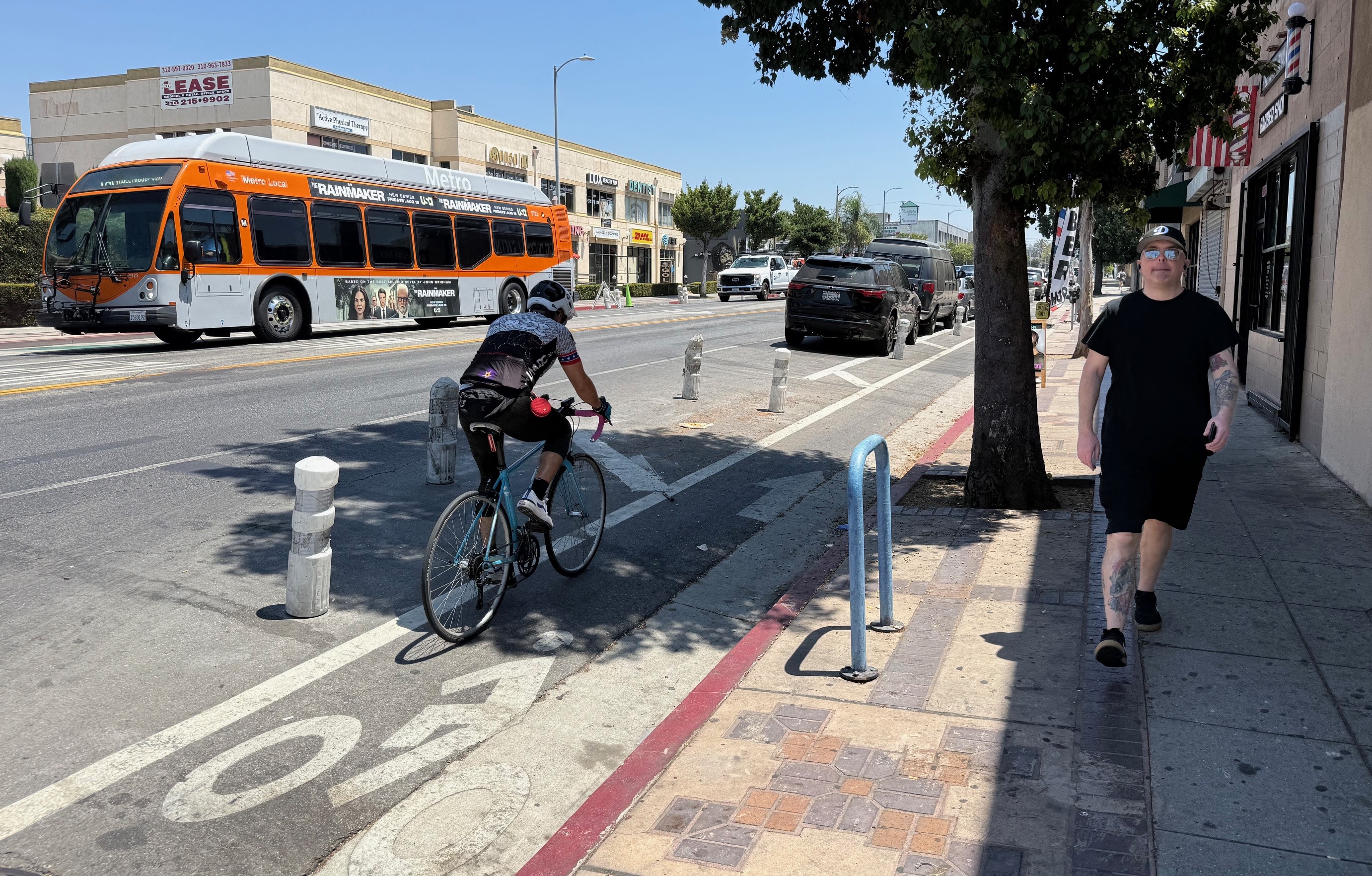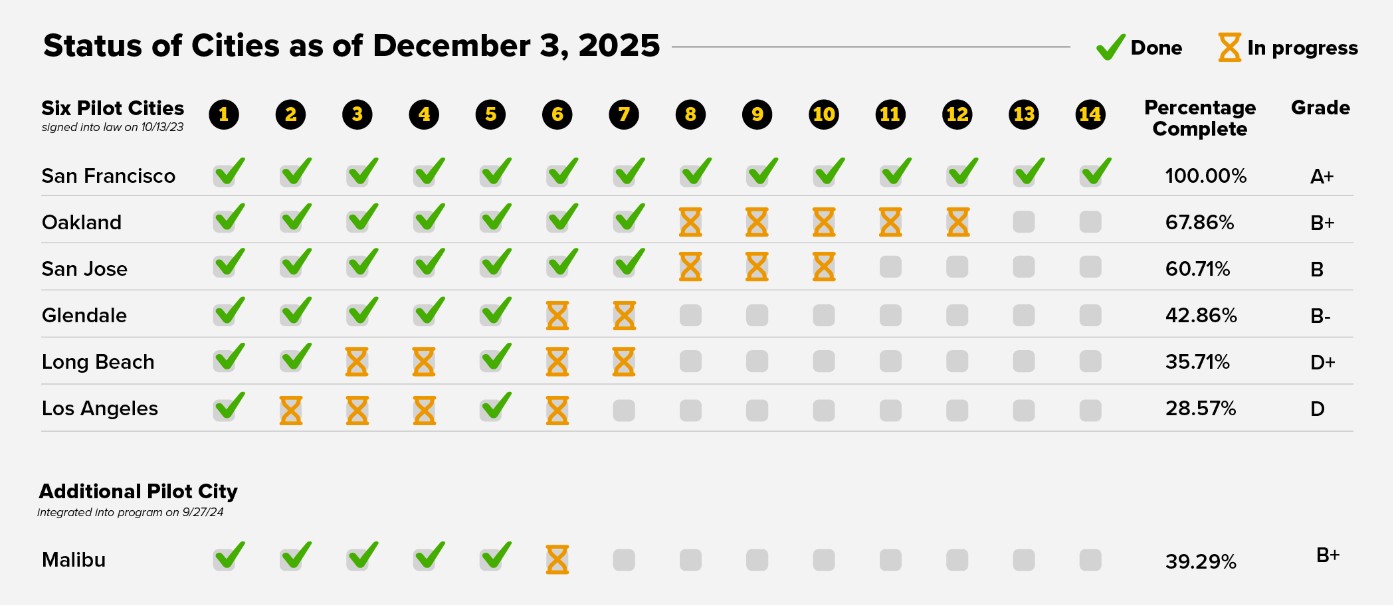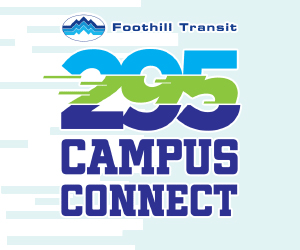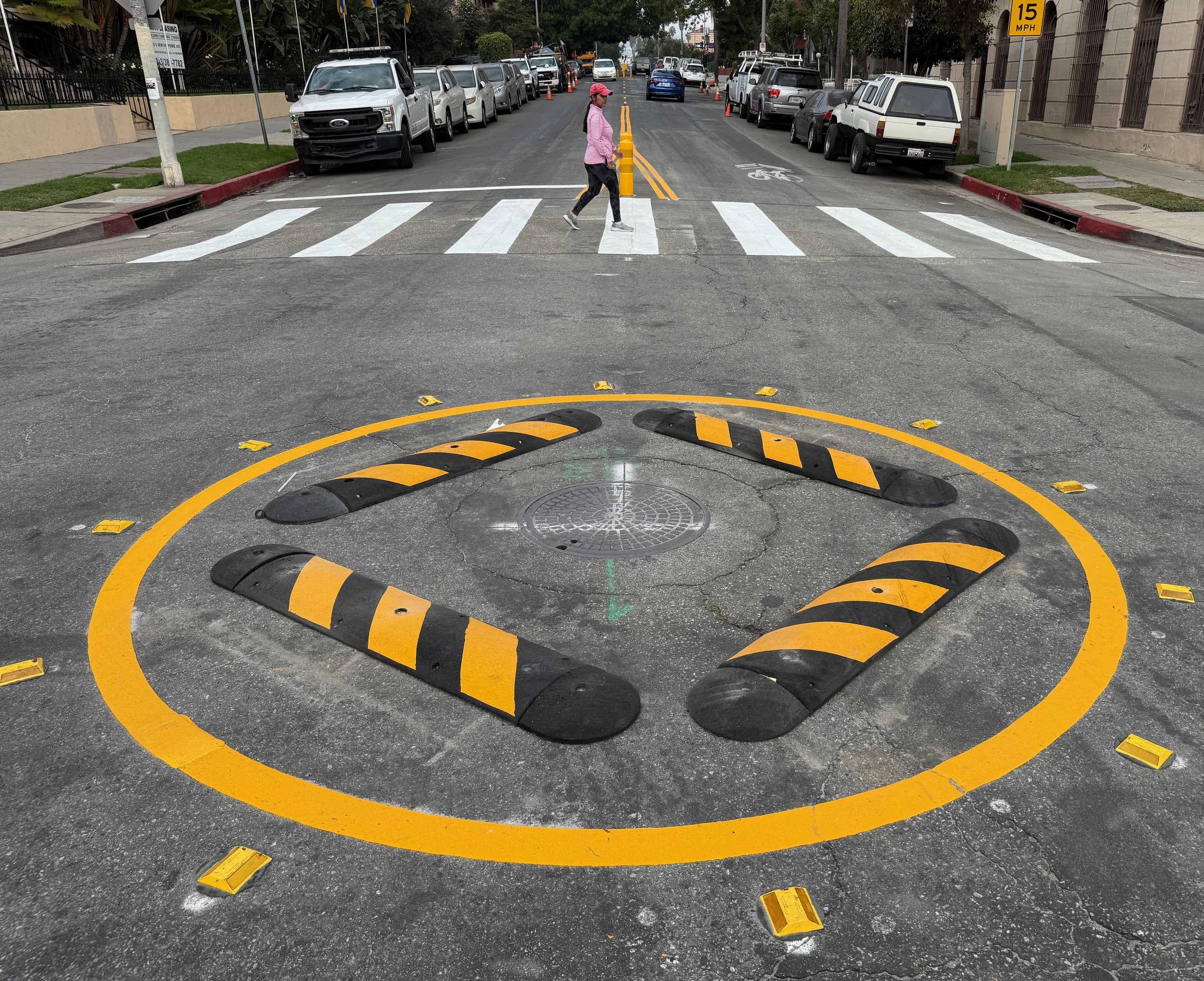Here comes Streetsblog L.A.'s annual look back at the past year of L.A. City bikeway implementation - the good, the bad, and the meh. In Fiscal Year 2024-25, the city installed 35.6 lane-miles of new or improved bike facilities. This is up from 22.5 miles last fiscal year, and is above the city's ~30 miles/year average for the past decade.
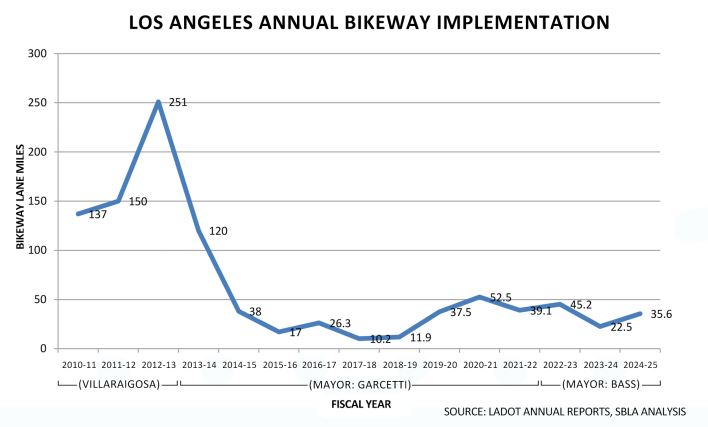
This year's mileage was boosted by the completion of several multi-year construction projects, mainly the Rail-to-Rail path in South L.A. and the San Fernando Road path in the east Valley. Four multi-year bikeway projects opened this year, totaling nearly 17 lane-miles - just over of half of this year's bikeway mileage.
Bikeway mileage data is from the Transporation Department's (LADOT) FY2425 bikeways list [page 2], reconciled in SBLA's annual spreadsheet.
FY24-25's 35.6 mile total includes 32.6 miles of new bikeways, plus 3.0 miles of upgrades.
Some bike facilities are safer than others. This annual SBLA post tallies higher quality projects (though bicyclists disagree on what constitutes a quality bikeway). Overall this year's output was mostly higher quality. Not counting bike routes (generally near-worthless sharrows), the yearly output was 31.2 new bike lane/path lane-miles. Significant quality upgrades (existing unprotected facilities converted to protected) totaled 1.9 lane-miles. The quality projects total 35 miles this year, compared to 18 miles last year.
Below are some factors that influenced this year's output:
- Completion of Multi-Year Projects - This year L.A. City finished construction on four multi-year bikeway projects: Rail to Rail path (8.8 lane-miles in L.A. City), San Fernando Road path (8.2 new lane-miles), Front Street path (1.1 lane-mile), and Imperial Highway bike lanes (~0.5 lane- miles). See below for additional information on each project.
- Street Resurfacing - LADOT continues to install new bikeways and upgrades during Bureau of Street Services (StreetsLA) road resurfacing. This is the least expensive time to reconfigure lanes; the street "goes black" and city needs to restripe it. Resurfacing and bikeways have been somewhat connected for decades. For the past half-dozen years, the connection was strengthened by city policies (responding to cyclist death/injury lawsuits) and formal and informal interdepartmental collaboration.
Measure HLA, which requires the city to install planned bike/walk/bus facilities during street improvements, is intended to strengthen this LADOT-StreetsLA collaboration.
It does not appear to have achieved that yet, but it may be too early to tell - FY2024-25 was the first full year of Measure HLA. What is apparent is that the city has effectively used loopholes (some legal, some dubious) to put implementation on hold.
Omitting multi-year projects (construction started before HLA), this year's bikeway mileage total drops to about 17 lane miles. That total represents a slight decrease compared to the dismal 22.5 miles last year (which included nearly three months of HLA). The comparison is not perfectly apples-to-apples, and the data is a bit noisy, but, so far, there is no HLA bikeway surge. It appears that (outside of projects that pre-date HLA) L.A. City bikeway output has slightly decreased under HLA.
As of today, per the city's HLA dashboard website, the city reports that HLA has triggered improvements on only one project: Reseda Boulevard (see below). That city website is woefully incomplete and (according to a city staff report) part of it is "erroneous," but it is the city's official record.
Like SBLA wrote last year: hopefully in future years, bikeway mileage (also accessibility, walkability, and bus lanes) will increase due to Measure HLA.
The Good
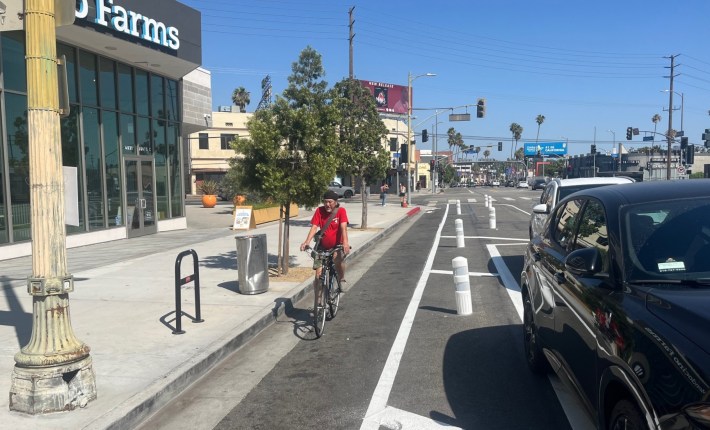
Under the leadership of Councilmembers Hugo Soto-Martinez and Nithya Raman, LADOT and StreetsLA installed their ambitious extensive Hollywood Boulevard Safety and Mobility Project, including 4.2 lane-miles of new parking-protected bike lanes.
Streetsblog has covered the city's three excellent new bike/walk paths: Rail to Rail, San Fernando Road, and Front Street.
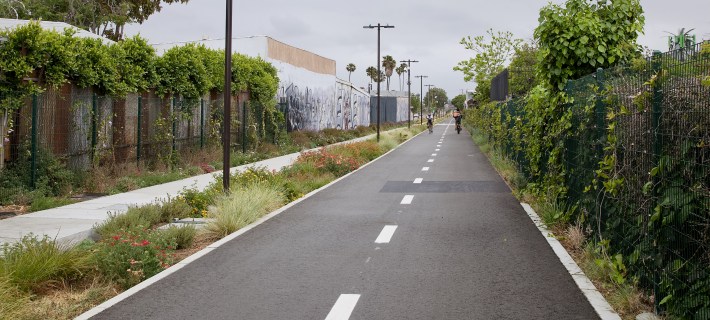
The first phase of Metro's long anticipated Rail-to-River path opened in May. The $166 million project converted just over five miles of unused South L.A. rail right-of-way between the Crenshaw (K) and Blue (A) Lines into a new bike/walk path, with extensive landscaping, lighting, and more. The 5.2-mile path (10.4 bikeway lane-miles) is mostly in the city of L.A. (8.8 lane-miles), with a portion in unincorporated L.A. County (1.6 lane-miles).
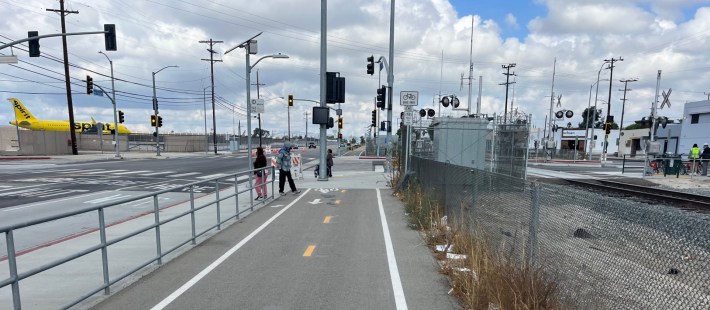
In September the city opened four miles (8.2 lane-miles) of new bike/walk path along San Fernando Road, under construction since 2021. That rail-with-trail path now extends ten miles from Sylmar to the edge of Burbank Airport.
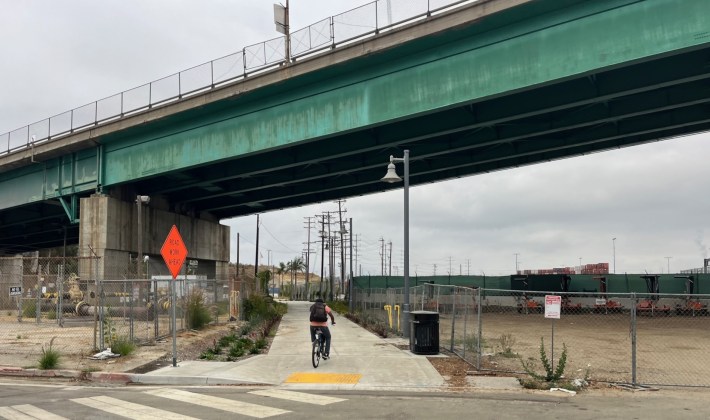
The Port of L.A. opened its Front Street Beautification Project, which features 1.1 lane-miles of new landscaped bike path.
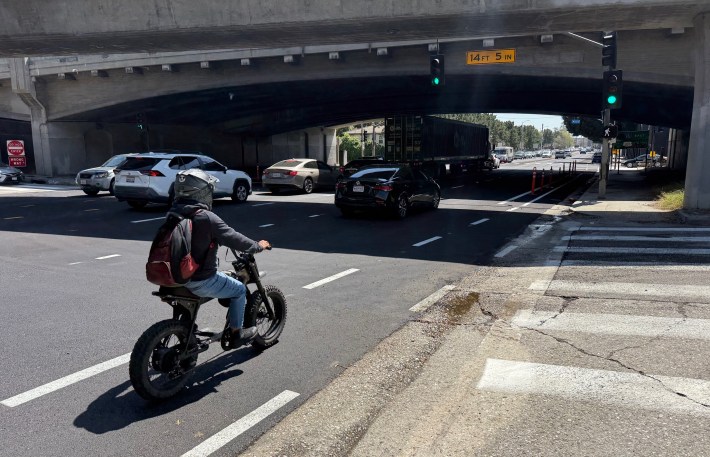
LADOT installed new bike lanes, part protected, on Mission Road in Boyle Heights. The facility makes first/last mile connections with the E Line and Union Station.


LADOT managed to squeeze in a few worthwhile asymmetric bikeways on somewhat hilly streets in Northeast Los Angeles, improving bike safety in locations with somewhat limited space. These include new bike facilities (mostly uphill bike lanes) on Avenue 51/Townsend Avenue and Avenues 63 and 64.

LADOT closed a slip lane in Koreatown, adding plastic bollard protection along about 100 feet of existing bike lane on First Street.
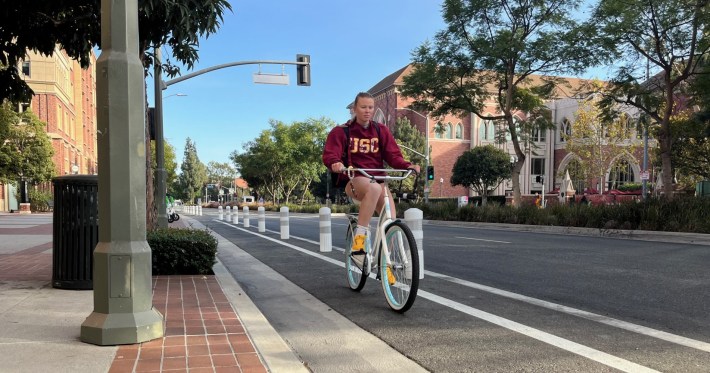

Two of the city's most populous college campuses - USC and UCLA - received modest bike lane upgrades. Along the north end of USC, Jefferson Boulevard bike lanes were upgraded, adding plastic-post protection. Just inside the east end of UCLA, the campus added a block of plastic-post-protected bike lane. The frustrating thing is that these locations are among the most bicycled places in Southern California (especially the neighborhoods around USC) and there remains a paucity of bikeways to get college students and staff to and from school.
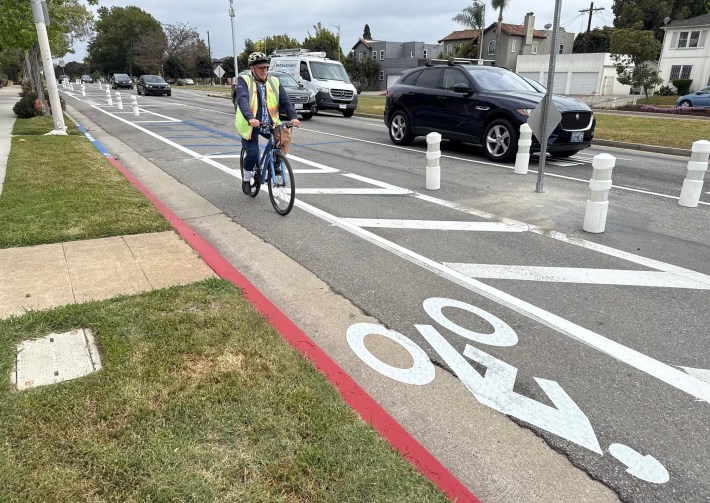
During partial resurfacing, LADOT installed half a mile of eastbound parking-protected bike lane on San Vicente Boulevard. This finished a few blocks of the planned San Vicente lane that had been omitted in late 2022 due to DWP construction. (The project is marginally interesting in that it is another exception to city practice that had prohibited installing new bikeways in locations where the city determined the pavement condition is poor. The city did exactly that here, and last year on Century Boulevard.)


The city is now wrapping up construction for its Downtown L.A. Arts District Pedestrian and Cyclist Safety Project [see description page 6], funded by a state Active Transportation Program (ATP) grant. Near the west end of the new 6th Street Bridge, this project added new bike lanes on Santa Fe Avenue (partially protected) and on Mateo Street, both of which were open as of April 2025.
During resurfacing, LADOT opportunistically added bike lanes on stretches of Mason Avenue (in Winnetka) and Mesa Avenue (in Highland Park).
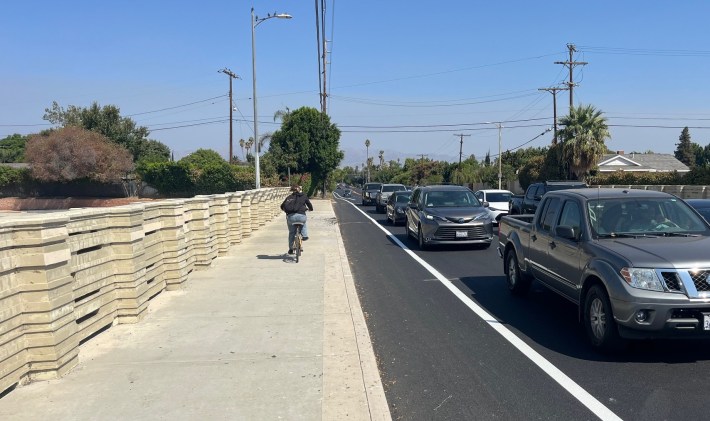
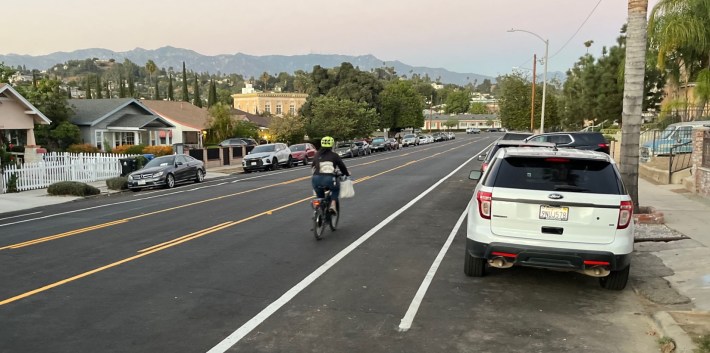
During resurfacing, LADOT upgraded about 500 feet of existing unprotected bike lanes on Manchester Avenue, adding plastic soft-hit posts.
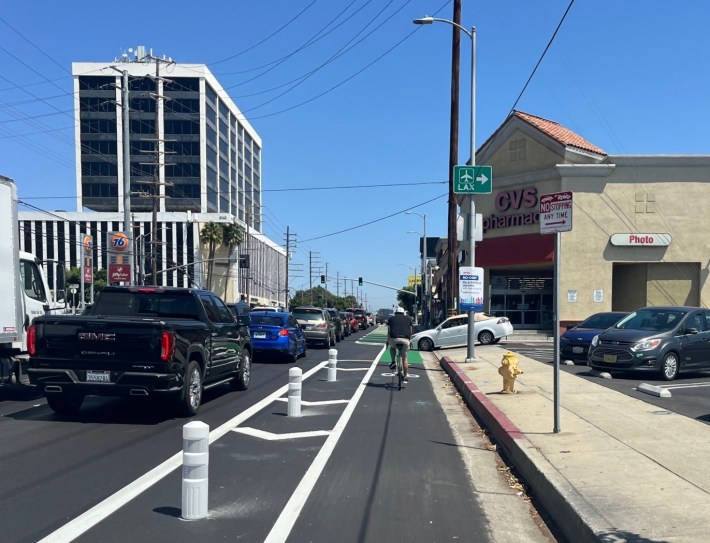
As part of a modest package of walk/bike improvements in South L.A.'s Chesterfield Square Park neighborhood, LADOT extended the 54th Street unprotected bike lanes an additional fifth of a mile. The project stopped a couple blocks short of connecting to Crenshaw Boulevard bike and transit facilities.

The Meh
None of these "meh" bikeways are bad; they're positive, but too modest to really celebrate. Cyclists are riding on all of these, but on the whole they're meh.
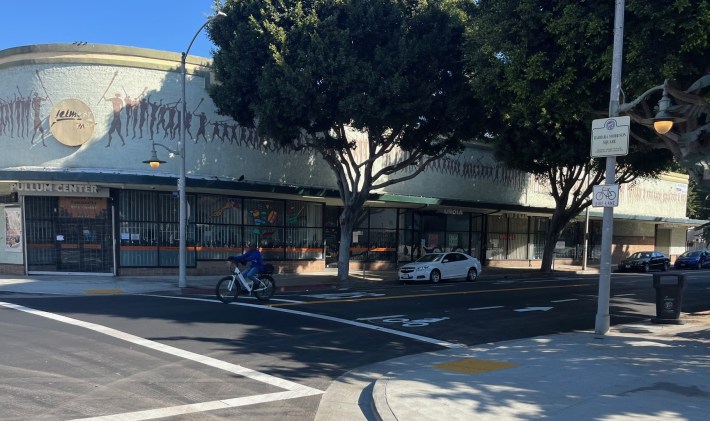
In Leimert Park, acceding to requests from drivers and local businesses, LADOT expanded on-street car parking (a block away from the new Metro K Line Station), while installing modest bike improvements on 43rd Street, 43rd Place, and Degnan Boulevard.

In Pico Union, LADOT added about half a mile (1.1 lane miles) of new bike lanes on Bonnie Brae Street, omitting one block in the middle of the new bikeway, in order to preserve on-street parking. The bikeway is a small step in a good direction.
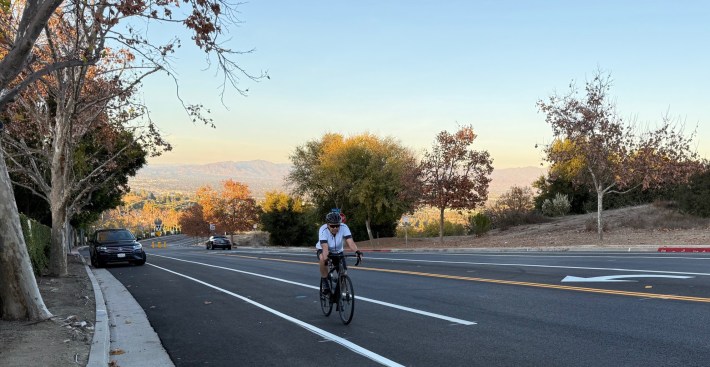
In the first clear instance of a new bike facility required by Measure HLA, LADOT added new bike lanes on a hilly suburban section of Reseda Boulevard in the neighborhood of Tarzana. The facility extended two records that Reseda Boulevard already held: the longest continuous on-street bikeway facility in L.A. County (10.0 miles) and the most total miles of on-street bikeway of any L.A. County street (11.8 miles).
The short bike lane extension took some prodding, and arguably remains incomplete.
A mile of Reseda was resurfaced on September 11, 2024. Within a week or so, the city repainted existing basic bike lanes off of the new segment - but not the required new bike lanes.
Somehow the newly HLA-required extension caught city staff by surprise. When StreetsLA announced the resurfacing in August, advocates notified the city that the new law required the new bikeway. LADOT delayed the new lanes about two months, completing them in November.
HLA triggered new bike lanes on a stretch about 430 feet long (from the upper end of Winford Drive to the gate for Marvin Braude Mulholland Gateway Park). But, for reasons known only to city staff, LADOT only installed about 330 feet of downhill bike lane, and about 250 feet of uphill bike lane.
It's good news that, under HLA, the city can no longer routinely omit planned facilities like this. But it shouldn't take approving a plan, waiting a decade, passing a law, and waiting three months to get half a block of unprotected bike lanes at the top of a hill. This is basic stuff that should have been standard practice long ago.
The Bad
As far as Streetsblog can tell, the city did not remove or downgrade any existing bike lanes. By and large, this year's bikeway projects were very good to meh.
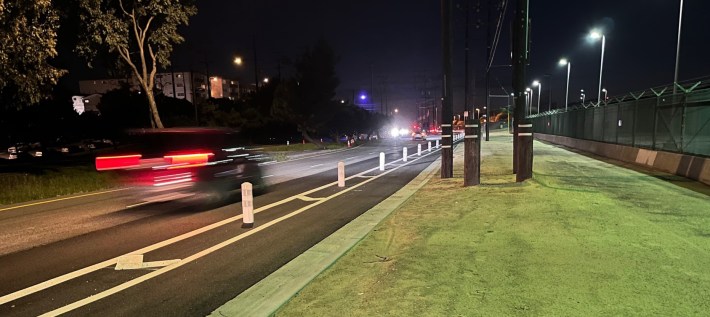
The one project that Streetsblog is including in the "bad" category is a new stretch of plastic-protected bikeway on Imperial Highway next to LAX. This project had been planned for more than a decade, and was under construction since 2023.
Westbound cyclists used to ride this stretch of Imperial on a sidewalk marked "bike path." It was not ideal, but effectively provided them concrete curb-protection from drivers routinely traveling at 50+ miles per hour. For this project, the city widened the street - removing about 300 feet of sidewalk - and put those westbound cyclists at the same level as speeding drivers, now with only plastic soft-hit posts for "protection." (The eastbound side is not much better. There, StreetsLA left the sidewalk intact but narrowed the median, widening the street enough to add the missing stretch of plastic-protected bike lane.)
A $1.9 million 0.25-mile bike project that included curb work should have provided actual curb protection to cyclists (and should have added sidewalk, not taken it away). The city did a lot of work, but that part of Imperial - used for beach access - remains loud, dangerous, and scary.
Find previous annual bikeway mileage coverage from 2024, 2023, 2022, 2021, 2020 and 2019.
